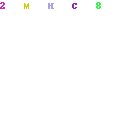Software robots are taking over many manual processes

Software robots or bots as they are called are doing to business processes what automation did to manufacturing decades ago.
For HR divisions dealing with hundreds of resumes, there are bots today that can go through resumes against job descriptions, figure out the most relevant ones, and even schedule interviews with those candidates. For contact centre agents, there are bots that can quickly identify, catalogue, and analyse a caller’s intent and help get the answers customers want, fast.
For those in finance & accounting, there are hundreds of processes between the moment someone places an order, and till the cash is received.
The invoice needs to be taken, looked into, followed up on multiple systems, reconciled, the payment needs to be followed up, and when the payment comes, that needs to be locked, and a reconciliation undertaken again. The entire process can today be done by bots.
Robotic process automation (RPA) is one of the biggest disruptions happening at the workplace. RPA itself uses a variety of technologies. Such as document recognition, screen scraping which is the process of collecting screen display data from one application and translating it so that another application can display it handwriting recognition, and optical character recognition (OCR), which allows a computer to distinguish, for instance, a B from a D, even if the size or font is different.
In combination with technologies like natural language processing (NLP) and artificial intelligence (AI), the possibilities are infinite. Where companies deal with hundreds of invoices, these invoices could be coming in different formats pdf, tiff, jpeg.
One can use AI systems to train bots to understand for each invoice, which is the invoice number, which the due date, which the total. And as it trains with more and more invoices, the better it gets.
The ANZ Banking Group was one of the early ones to adopt RPA aggressively, and the lead for that was taken by its shared services centre in Bengaluru. “They automated lots of processes, created thousands of bots across HR, technology, finance,” says Ankur Kothari, co-founder of Automation Anywhere, one of the three biggest RPA companies in the world, alongside UiPath and Blue Prism.
In 2017, SSON Analytics, a provider of data insights into the outsourcing industry, said ANZ had reduced manual processes by 85% (equivalent to 400 full-time employees).
It said customer processes that used to take up to five days to execute, had come down to 24 hours. Errors had reduced. And if the marketing team planned a new campaign to promote credit card sign-ups, they could use bots to quickly deal with the process involved.
Previously, they had to plan this months in advance in order to hire enough new (often temporary) staff to deal with the influx of new credit card applications.
RPA is also highly cost-effective, says Raghunath Subramanian, CEO of UiPath India. “We have seen customers getting massive returns in three months, six months.
No other project can promise this,” he says. This is to a great extent because RPA companies have developed platforms that have made it very simple for even nonprogrammers to create bots.